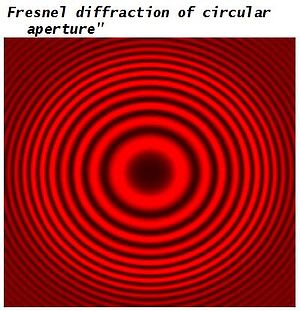Question #5d31a
1 Answer
Diffraction refers to the phenomena that occurs when a wave encounters an obstacle or a slit. It is defined as the bending of light around the corners of an obstacle or aperture into the region of geometrical shadow of the obstacle.
Since, light shows wave like properties, it shows diffraction.
If the size of the obstacle (diffracting element) is comparable with the wavelength of light, diffraction effects are significant and have been observed. There is a bending of light which leads to partial illumination in the region of geometrical shadow of the obstacle.
However, accounting to very small wavelengths of visible radiation
Diffraction of light is broadly classified as :
1) Fresnel diffraction : This happens where wave-fronts encountered are not plane wave-fronts. The source and the screen are at finite distances from the diffracting element.

2) Fraunhofer diffraction : Both the source of light and the screen are at infinite (sufficiently large) distances from the diffraction slit or obstacle, The wave-fronts encountered are plane ones. The light is parallel to the diffracting slit!
In Fraunhofer diffraction, a single slit or a number of slits are employed with light being parallel to the slit(s). This can be done by Schuster's method for adjusting a spectrometer.
The pattern so obtained on the screen shows successive bright and dark bands with varying width and intensity of bright bands falling off rapidly as shown.

The dark regions are known as the diffraction minima while the bright ones are the maxima.
The central bright region is the principal maxima. The dark regions immediately on both sides are called the first diffraction minima, the successive bright regions constitute secondary maxima.

